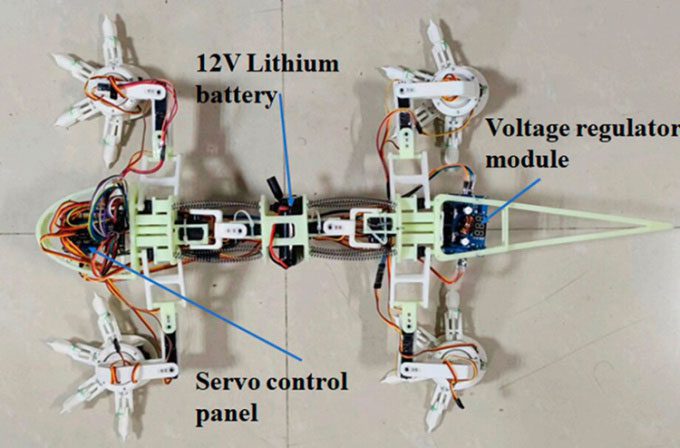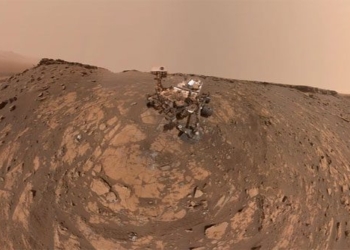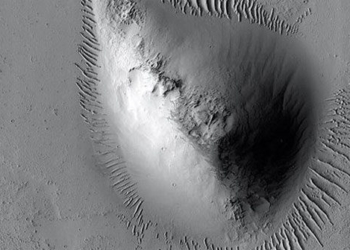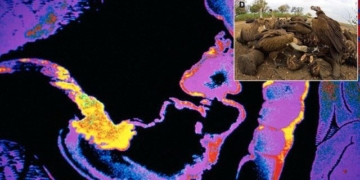Nanjing University of Aeronautics and Astronautics Designs Four-Legged Lizard-Inspired Robot for Mars Exploration
Dr. Guangming Chen and his team at Nanjing University of Aeronautics and Astronautics (NUAA) have developed a new four-legged robot inspired by desert lizards, which could aid in future exploration of the Martian surface, as reported by Phys on February 3. The research was published in the journal Biomimetics.

Four-legged robot prototype inspired by desert lizards. (Photo: Biomimetics)
Due to the Martian surface being composed of various sizes of soil grains and rocks, autonomous robots face challenges when moving over soft soil or climbing over stones. To address these difficulties, the team of experts at NUAA developed a new robot based on the movement characteristics of desert lizards.
This biomimetic robot features a flexible spine-like structure and four legs. To replicate the typical movement of lizards, each leg has two joints and a gear that creates a swinging motion.
Each hip joint connecting the spine to the legs consists of two servo motors and a linkage mechanism with four bars that allows the robot to elevate its body without losing balance. The robot’s feet have four digits, including two joints and a claw. “The feet have an ankle and a round pad with four flexible toes, effective for gripping soil and rocks,” the research team stated.
Initially, the team evaluated the robot through a series of simulations to determine if it could effectively replicate lizard movements. They obtained promising results with the robot demonstrating the ability to perform the desired movements and gait styles.
The scientists constructed the robot prototype using 3D-printed plastic materials, servo motor control panels, lithium batteries, and other electronic components. They then utilized a simulated environment to assess the prototype’s movement on rocky surfaces resembling Martian terrain.
Chen and his colleagues discovered that the robot could move effectively in rocky environments, indicating its potential application in future missions to the Red Planet. However, before the robot can operate outside the laboratory, further improvements are needed, such as adding a sealed casing to protect it from airborne dust or constructing the body with more durable materials.
Currently, the team is researching machine learning models that will allow the robot to adapt its movements to different terrains. Additionally, they plan to develop a continuous power supply system for the robot.





















































